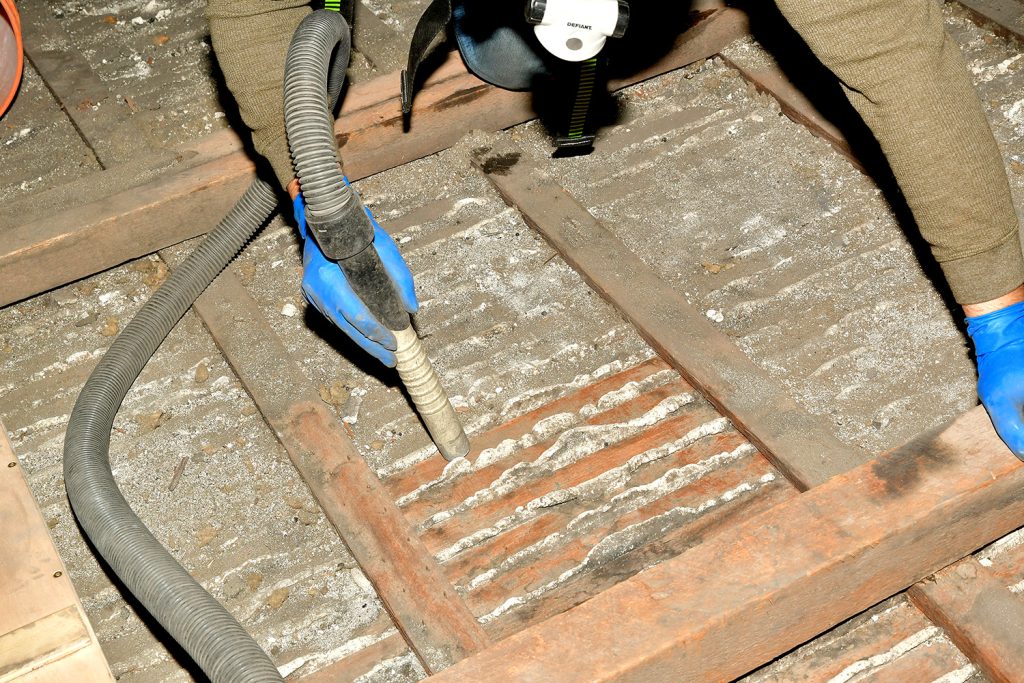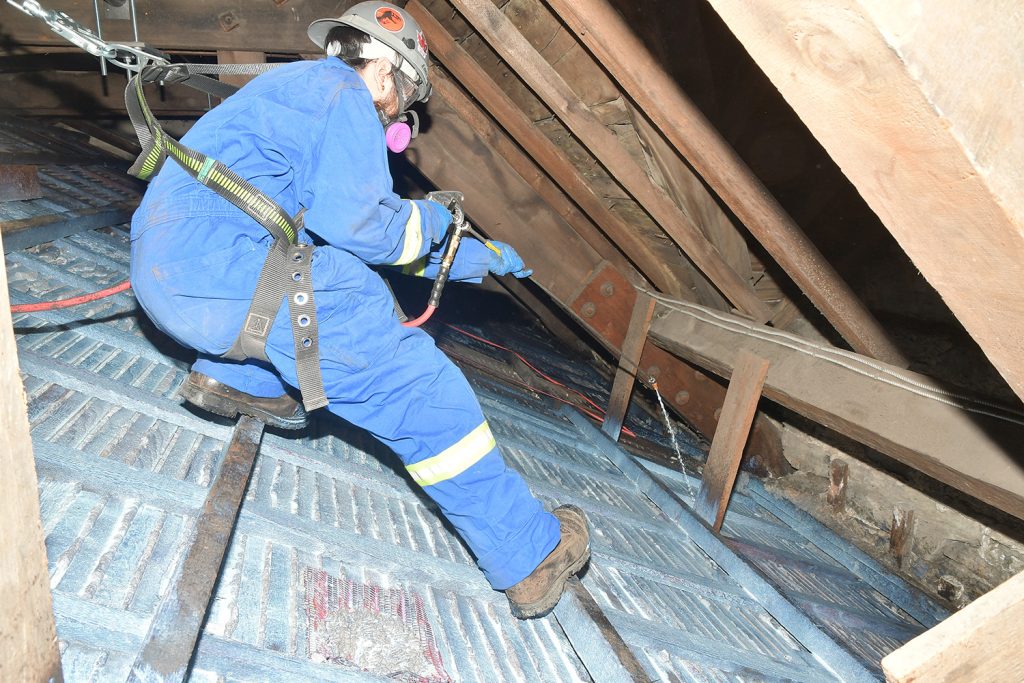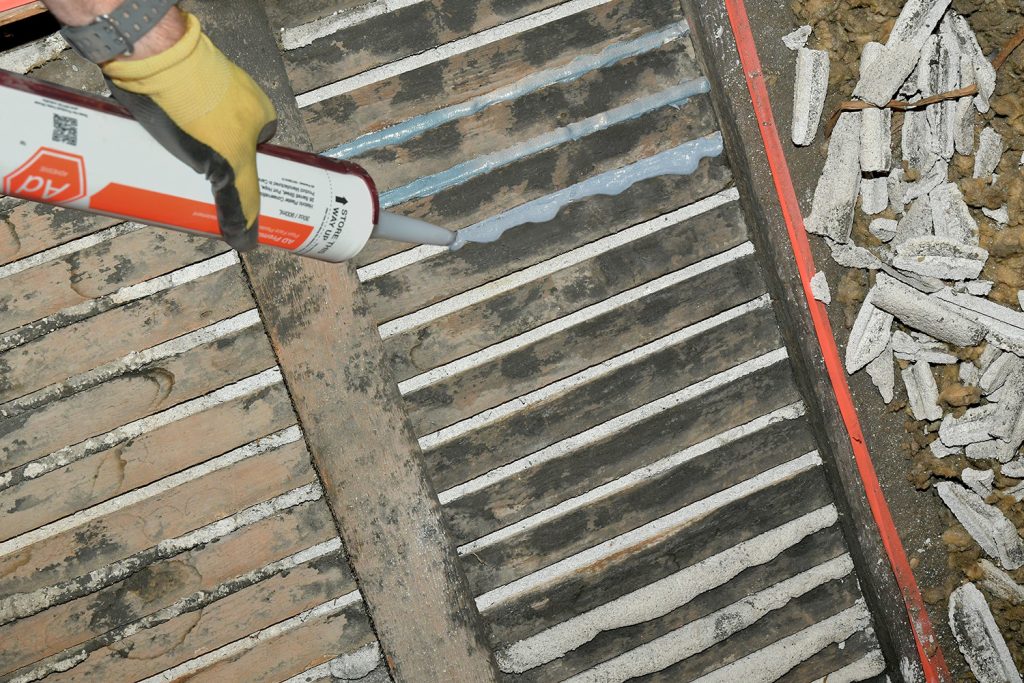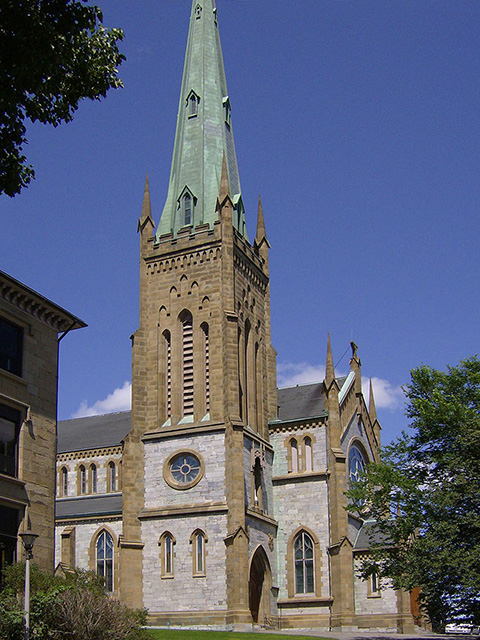Saint John New Brunswick (1885)
Project Synopsis:
The cathedral is undergoing a long-term rehabilitation that includes major work on the building envelope and structural repairs. The roof had leaked for several years causing damage to the plain face plaster and the cornice. A large piece of the cornice finally fell onto the pews prompting the installation of a safety scaffolding deck over the pews. The Parish hired a local contractor to inspect the cornice. Approximately 10% of the cornice was deemed loose and removed by the contractor. In the interest of preserving the remaining plaster the Parish contacted Historic Plaster Conservation Services to see what could be done.
HPCS was originally retained in 2017/2018 by the Client to conducted a plaster condition assessment of the ceilings over the nave, transepts, crossing, and sanctuary, and to create and plan for preserving and stabilizing the plaster. We inspected the plain face plaster from the attic and determined its condition by conducting about 20 Lug and Key pull tests across the ceilings. This is the preferred test for assessing the condition of plain face plaster on wood lath. The test provides a snapshot of a plaster system’s current strength relative to its ‘as-built’ condition. The test results are quantitative, objective, and repeatable.
The testing revealed that the plaster was in very bad condition and at risk of collapse in many areas. HPCS proposed consolidating the plaster from the attic. A methodology for stabilizing the cornice and replacing the missing sections was also proposed.
In the spring of 2022 preparations began for the consolidation work. A full scaffolding deck was erected under all the ceilings that were to be consolidated. This isn’t always necessary but in this particular case, there were a number of repairs to be made where plaster had fallen over the years, and the remaining plaster’s strength was so compromised we wanted to be able to closely monitor its condition from the face as we worked.
An cleaning contractor did the rough work of cleaning out large debris in the attic and removing the old insulation on the back of the plaster.
The consolidation treatment for the ceilings involved thoroughly cleaning the back of the plaster with HEPA vacuums. In addition to the old insulation and loose debris in the attic there was a thick layer of dust and sand on the back of the plaster that had to be cleaned to properly treat the plaster. We estimate that we removed somewhere in the order of 2,000kg of material from the attic that was resting on the back of the plaster.
During the cleaning process HPCS technicians checked each plaster lug and key and removed all the broken ones. Many areas of the ceiling had less than half their support keys remaining and the plaster could be seen sagging away from the lath.
The plaster was consolidated with four step process that included ‘wet-on-wet’ applications of HPCS S-20 Primer, S-50 Primer, and R-100 Plaster Consolidant. The primers and consolidant were sprayed on at controlled rates to ensure full penetration.
The final step of the treatment was the application of two different lug and key replacement grouts. We used a product called GR Non-Shrink Grout for the areas where the plaster was sagging away from the lath by more than a few millimeters. This product expands slightly upon application to compensate for shrinkage due to moisture loss in the grout when drying. It is perfect for filling larger voids and bonding sagging plaster to lath. We used our standard AD-Premixed Lug and Key Replacement Grout for areas where there there was key loss but the plaster remained close to the lath. Both types of key replacement gouts are applied with a standard dripless caulking gun caulked to the spaces between laths where keys are missing.



The cornice was stabilized by injecting HPCS R-100 Consolidant in all the fractures. Additionally we anchored any loose or potentially loose plaster by setting stainless steel threaded pins in the cornice with HPCS AD-25 Gel – a thixotropic acrylic adhesive particularly suited for setting dowels and pins in plaster.
The interior rehabilitation was completed by early summer of 2022.

